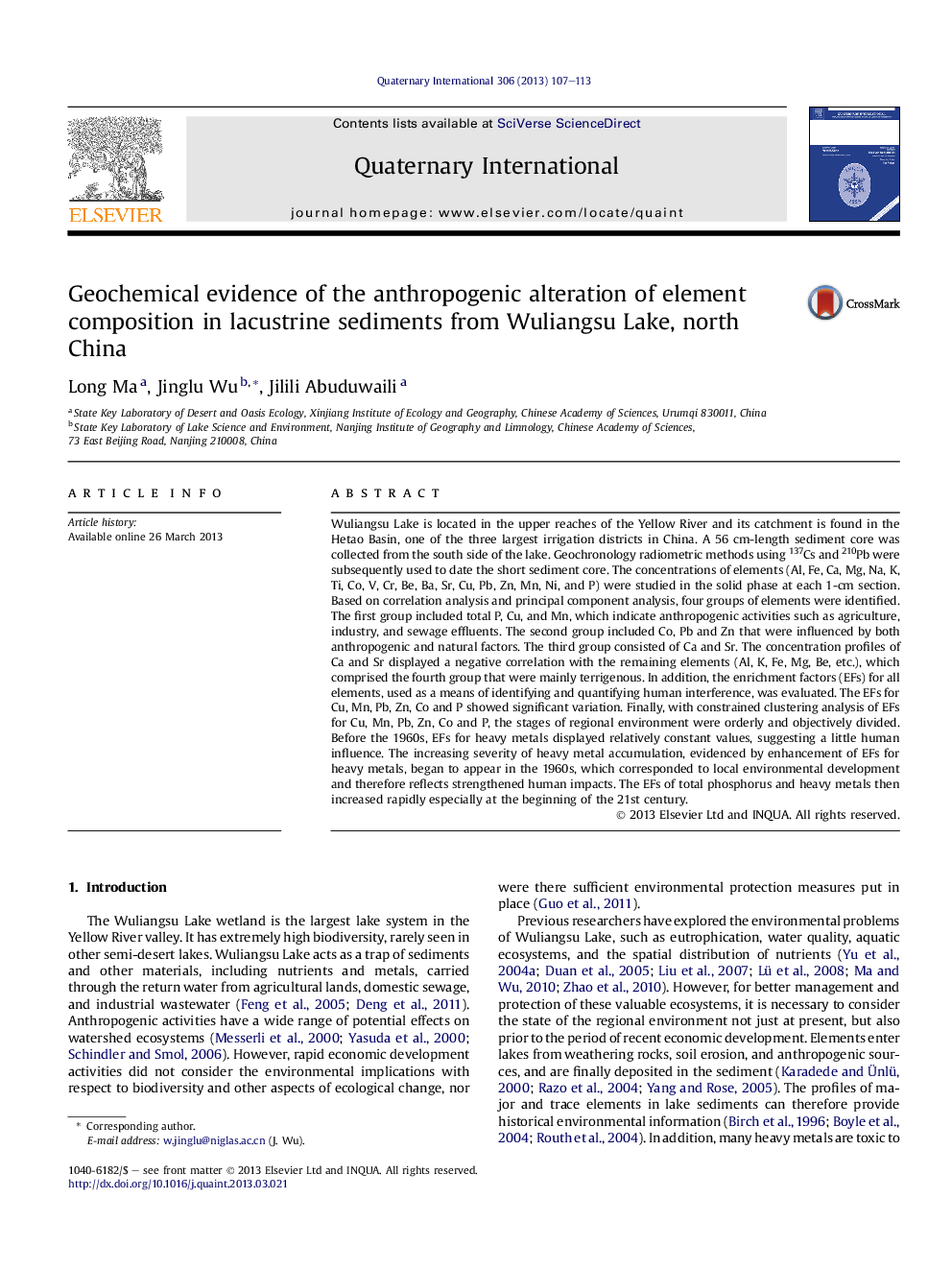| کد مقاله | کد نشریه | سال انتشار | مقاله انگلیسی | نسخه تمام متن |
|---|---|---|---|---|
| 1041915 | 1484183 | 2013 | 7 صفحه PDF | دانلود رایگان |

Wuliangsu Lake is located in the upper reaches of the Yellow River and its catchment is found in the Hetao Basin, one of the three largest irrigation districts in China. A 56 cm-length sediment core was collected from the south side of the lake. Geochronology radiometric methods using 137Cs and 210Pb were subsequently used to date the short sediment core. The concentrations of elements (Al, Fe, Ca, Mg, Na, K, Ti, Co, V, Cr, Be, Ba, Sr, Cu, Pb, Zn, Mn, Ni, and P) were studied in the solid phase at each 1-cm section. Based on correlation analysis and principal component analysis, four groups of elements were identified. The first group included total P, Cu, and Mn, which indicate anthropogenic activities such as agriculture, industry, and sewage effluents. The second group included Co, Pb and Zn that were influenced by both anthropogenic and natural factors. The third group consisted of Ca and Sr. The concentration profiles of Ca and Sr displayed a negative correlation with the remaining elements (Al, K, Fe, Mg, Be, etc.), which comprised the fourth group that were mainly terrigenous. In addition, the enrichment factors (EFs) for all elements, used as a means of identifying and quantifying human interference, was evaluated. The EFs for Cu, Mn, Pb, Zn, Co and P showed significant variation. Finally, with constrained clustering analysis of EFs for Cu, Mn, Pb, Zn, Co and P, the stages of regional environment were orderly and objectively divided. Before the 1960s, EFs for heavy metals displayed relatively constant values, suggesting a little human influence. The increasing severity of heavy metal accumulation, evidenced by enhancement of EFs for heavy metals, began to appear in the 1960s, which corresponded to local environmental development and therefore reflects strengthened human impacts. The EFs of total phosphorus and heavy metals then increased rapidly especially at the beginning of the 21st century.
Journal: Quaternary International - Volume 306, 3 September 2013, Pages 107–113